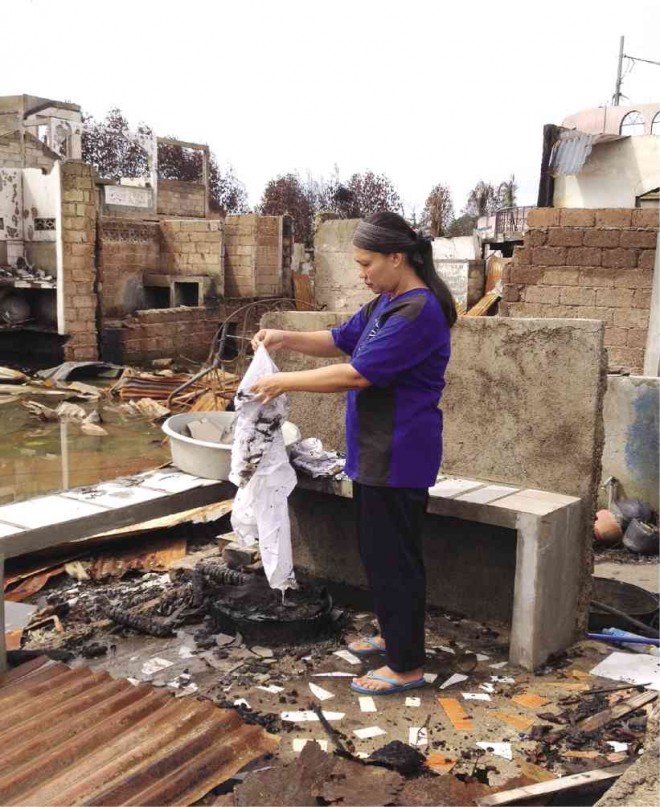Zamboanga rehabilitation costs P1 billion—UP planning, research group

A WOMAN is able to retrieve a school uniform from what remains of her house in Zamboanga City, in a community razed to the ground by fighting between followers of Nur Misuari and government soldiers. JULIE ALIPALA/INQUIRER MINDANAO
ZAMBOANGA CITY—The University of the Philippines Planning and Development Research Foundation Inc. (UP Planades) has estimated the cost of rebuilding the city at P1 billion following the damage wrought by days of terror from followers of Moro leader Nur Misuari in September.
Architect Danilo Umali, of the UP Planades team, said the amount was a conservative estimate. UP Planades has been helping in the recovery, rehabilitation and rebuilding program in the villages hit by the carnage that followed the occupation of city communities by Misuari’s men.
Thousands of houses were either burned or had collapsed due to explosions during the siege, which lasted for nearly a month and also saw over a hundred people killed and more than 100,000 others displaced.
“Everything is still in the conceptual framework,” Umali said of the giant task ahead under the “Build Back Better Zamboanga” program.
Umali said the program was not just about building socialized and mid-rise houses but also about rehabilitating roads, amenities, waterways, health centers, parks and playgrounds, schools and religious structures.
“Flood control and drainage systems are also included in the planning,” he said.
Professor Bagian Aleyssa Abdulkarim, of Western Mindanao State University and a local consultant of UP Planades, said the total area of communities damaged in the terror was 41,440 hectares in the six villages of Sta. Barbara, Rio Hondo, Sta. Catalina, Mariki, Kasanyangan and Talon-talon.
At least 6,800 houses have been damaged there, with at least 30,814 individuals displaced.
Rodrigo Sicat, city planning and development coordinator, said the city government was conducting a detailed survey of the damaged communities to determine the exact number of people who had been displaced and lost their homes and sources of livelihood.
As the rebuilding efforts went underway, the city government said displaced residents could stay at bunkhouses built a few days ago.
There are now more than 40 units of bunkhouses in the villages of Tulungatung and Taluksangay, and at Joaquin F. Enriquez Memorial Sports Complex that are ready for occupancy.
The Philippine Daily Inquirer, however, learned that many evacuees were reluctant to live in the bunkhouses, particularly those in Tulungatung and Taluksangay, which are 10 to 15 kilometers away from downtown.
“It will be difficult to live there because these are far from where commerce is,” said Palma Saidi, a mother of four who formerly lived in Sta. Barbara. Julie Alipala, Inquirer Mindanao